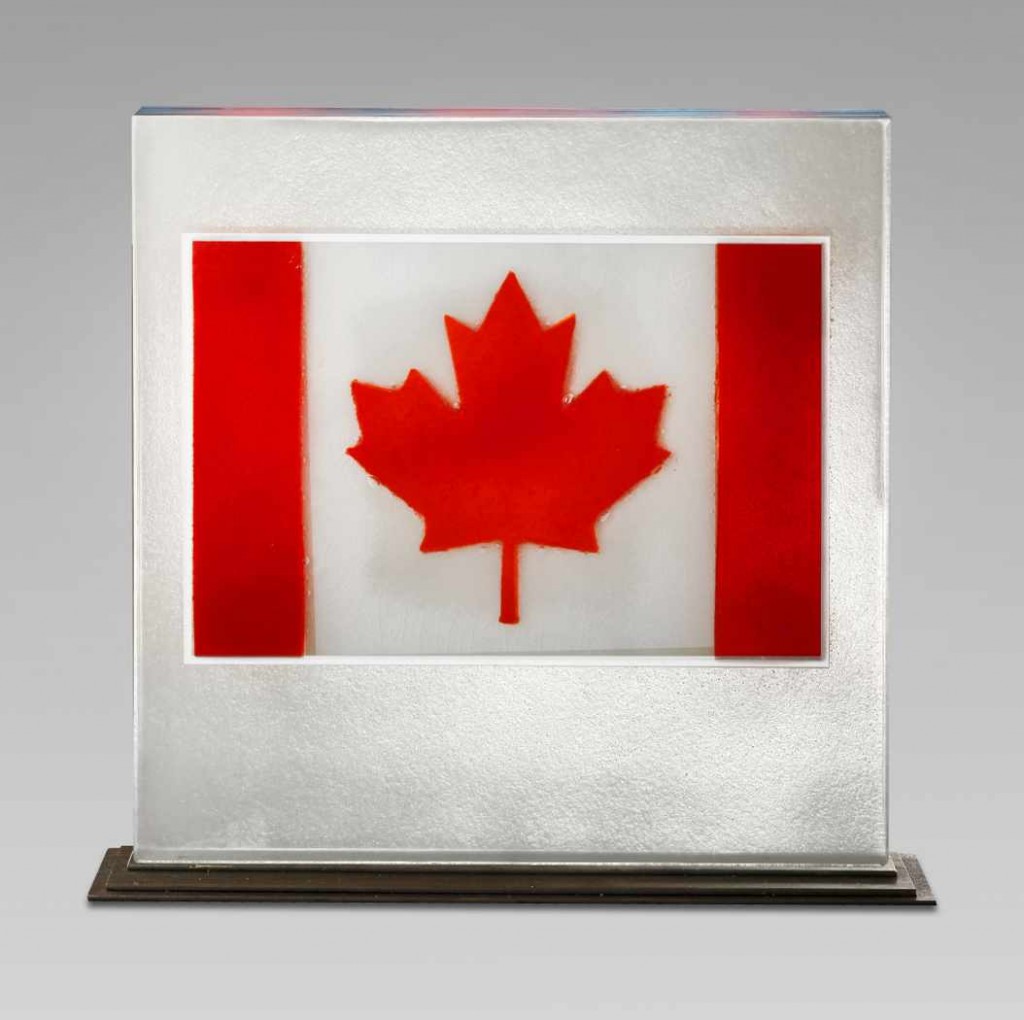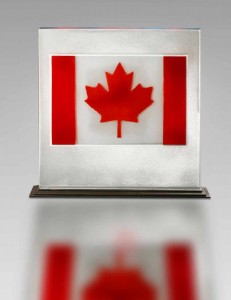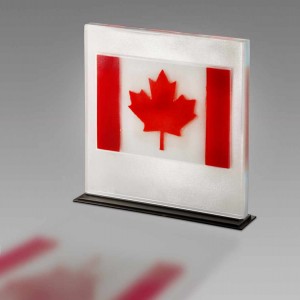 Return the 2011 summary
Return the 2011 summary
 Work available
Work available
Canada
2011
50 x 50 x 3.6 cm. 28 kg - glass merged in multilayer with inclusion of pigments ![]()
Ninety-seven years after the creation of the confederation of Ontario, Quebec, Nova Scotia and New Brunswick in 1867, Canada still did not have a distinctive national flag.
It used the Canadian Red Ensign, a version with a red background with the Union Jack in the upper left canton and the Canadian coat of arms in the clapper.
The debate intensified during the 1960s, becoming a subject of controversy as French Canadians demanded the addition of two blue stripes alongside the red stripes to represent the founding peoples of this country, of whom Jacques Cartier, the St. Malo navigator, had taken possession in the name of the king of France in 1534, and which had been ceded to Great Britain in 1763. The committee made its final selection on October 22, 1964 and chose the maple leaf flag: red and white had been proclaimed national colors of Canada by King George V in 1921, and, since the 1904 Olympic Games, Canadian athletes had worn the red maple leaf on a white background as the emblem of Canada.
The two red bands on the flag mean: from coast to coast.
Click on the images to zoom

Official name: Canada
Continent: America | Capital: Ottawa
Area: 9,976,140 km2
Population (2010): 34 019 000 habitants
Official languages : French English
Currency: Canadian dollar
Border countries: United States of America
National holiday: July 1 | Motto: From one ocean to the other
Member of the United Nations: November 9, 1945
Member of UNESCO: November 4, 1946


